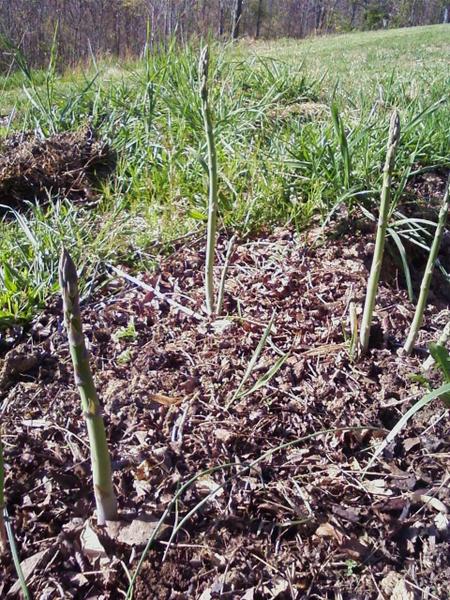
February Is a Great Time to Prune Blueberries!
Blueberries are a popular crop for commercial farmers as well as home gardeners in North Carolina. They are fairly …



El inglés es el idioma de control de esta página. En la medida en que haya algún conflicto entre la traducción al inglés y la traducción, el inglés prevalece.
Al hacer clic en el enlace de traducción se activa un servicio de traducción gratuito para convertir la página al español. Al igual que con cualquier traducción por Internet, la conversión no es sensible al contexto y puede que no traduzca el texto en su significado original. NC State Extension no garantiza la exactitud del texto traducido. Por favor, tenga en cuenta que algunas aplicaciones y/o servicios pueden no funcionar como se espera cuando se traducen.
Inglês é o idioma de controle desta página. Na medida que haja algum conflito entre o texto original em Inglês e a tradução, o Inglês prevalece.
Ao clicar no link de tradução, um serviço gratuito de tradução será ativado para converter a página para o Português. Como em qualquer tradução pela internet, a conversão não é sensivel ao contexto e pode não ocorrer a tradução para o significado orginal. O serviço de Extensão da Carolina do Norte (NC State Extension) não garante a exatidão do texto traduzido. Por favor, observe que algumas funções ou serviços podem não funcionar como esperado após a tradução.
English is the controlling language of this page. To the extent there is any conflict between the English text and the translation, English controls.
Clicking on the translation link activates a free translation service to convert the page to Spanish. As with any Internet translation, the conversion is not context-sensitive and may not translate the text to its original meaning. NC State Extension does not guarantee the accuracy of the translated text. Please note that some applications and/or services may not function as expected when translated.
Collapse ▲
Blueberries are a popular crop for commercial farmers as well as home gardeners in North Carolina. They are fairly …

Regional Turfgrass Morning Conference for New Hanover County is scheduled for February 26 to begin at 8:00 a.m. in Wilmington. …

Regional Turfgrass Afternoon Conference for New Hanover County is scheduled for February 26 to begin at 1:00 p.m. in …

Regional Turfgrass Conference for Guilford County is scheduled for March 21st, 2025 to begin at 8 a.m. in Greensboro. There …

Regional Turfgrass Conference for Johnston/Wake County is scheduled for March 26th, 2025 to begin at 8 a.m. in Smithfield. There …

Regional Turfgrass Conference for Caldwell County is scheduled for March 12th to begin at 8:00 a.m. at the Caldwell …
Nicholas Brown, an editor for Farm Law & Tax, recently gave a presentation at the 2025 N.C. Cooperative Extension State …

Roses are some of the most popular ornamental shrubs and climbers in North Carolina and throughout the world. Who …
It’s been a wild month for the Corporate Transparency Act (CTA) but as of today, the injunction against the …
December 26, 2024 UPDATE: On December 26rd, a merits panel on the Fifth Circuit Court of Appeals stayed the ruling …
View the new Winter 2024 pest update video, covering weed, disease and insect management in …
Nicholas Brown, an editor for Farm Law & Tax, recently gave a webinar to extension agents associated with Virginia Tech. …
The Special Depreciation Allowance, commonly known as ‘bonus depreciation,’ will continue to sunset from 2024 to 2025, going from …

The U.S. Fish & Wildlife Service announced on December 10 that they are proposing to list the monarch butterfly …

NEW Course in Therapeutic Horticulture: Program Development Starts February 17, 2025 Registration & More Info NC State University Department of Horticultural Science …
December 26, 2024 UPDATE: On December 26rd, a merits panel on the Fifth Circuit Court of Appeals stayed the ruling …

We are excited to announce a new opportunity for those interested in pursuing beekeeping as a hobby, or new …

The Extension Gardener Plant Toolbox has always been the go-to site for photos of cultivated plants, both native and …

This review presents the key steps involved in pruning a mature Carlos vine for maximum …

Asparagus has been considered a garden delicacy since Roman times. Any home gardener can grow …
Lack of yard space is no excuse for not growing a vegetable garden. Regardless of …
Sprouts from mung bean (Phaseolus aureus) have been used for food since ancient times. These …
Much success in growing tomatoes can be attributed to use of a few proven techniques. …
Caladiums are grown for their long-lasting, colorful foliage. Color combinations include various shades of red, …
Effective frost protection methods exist, however, each year, a portion of the state's fruit and …
This publication discusses growing and harvesting head lettuce, the most important salad vegetable grown in …